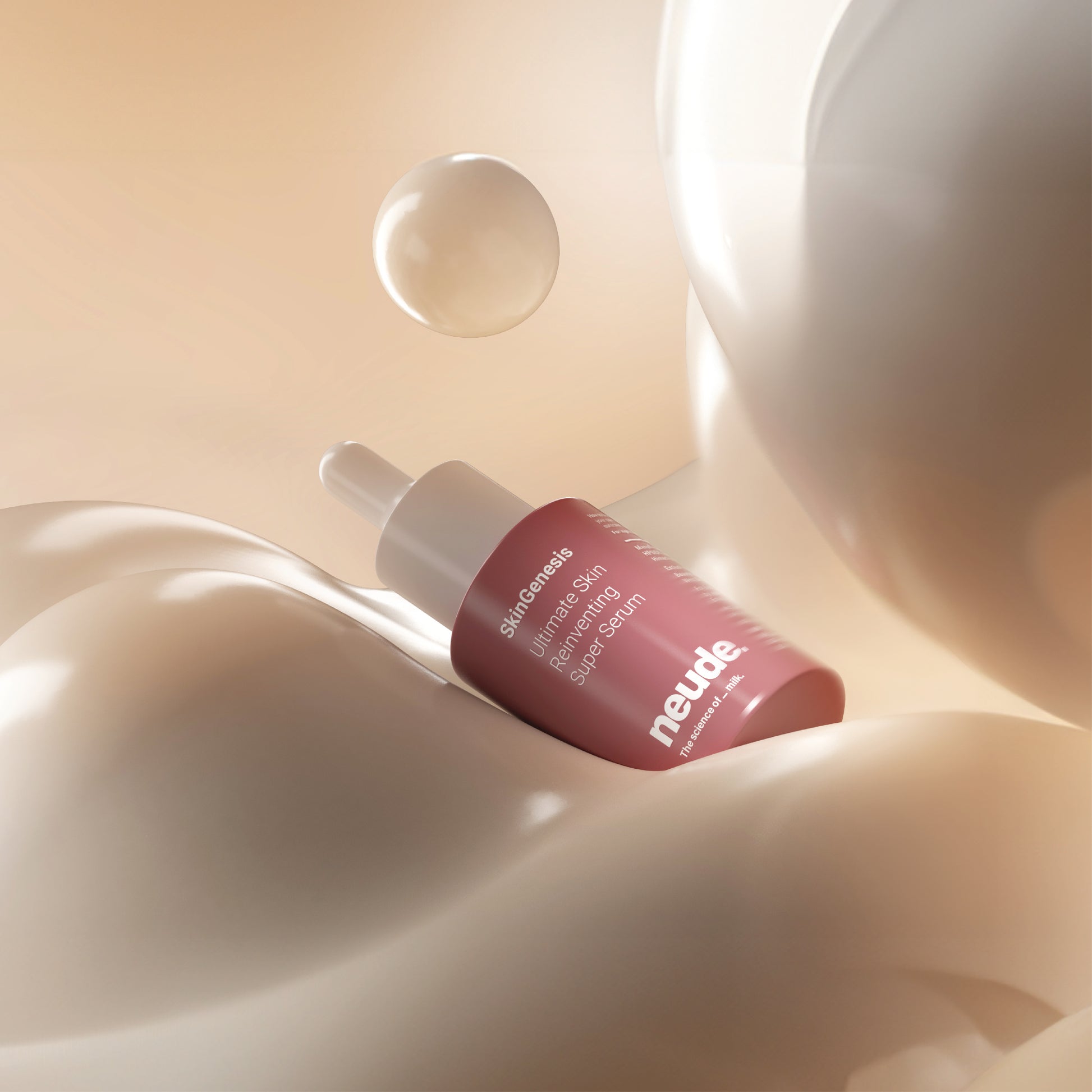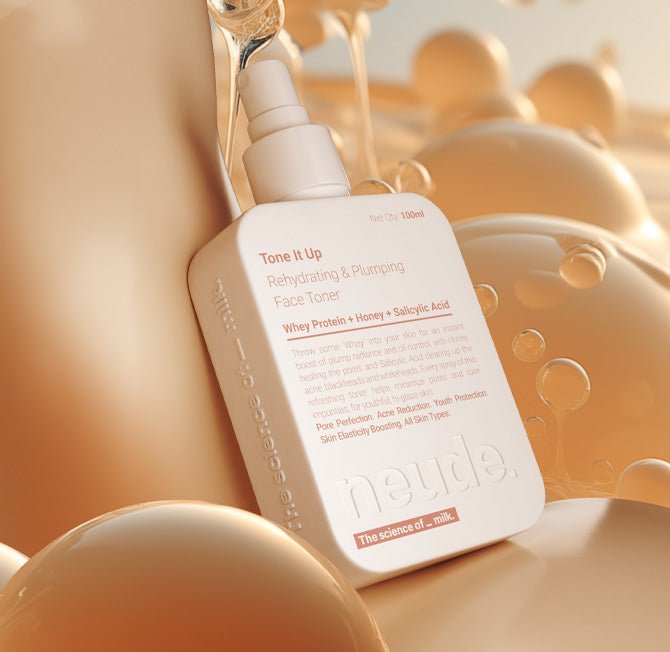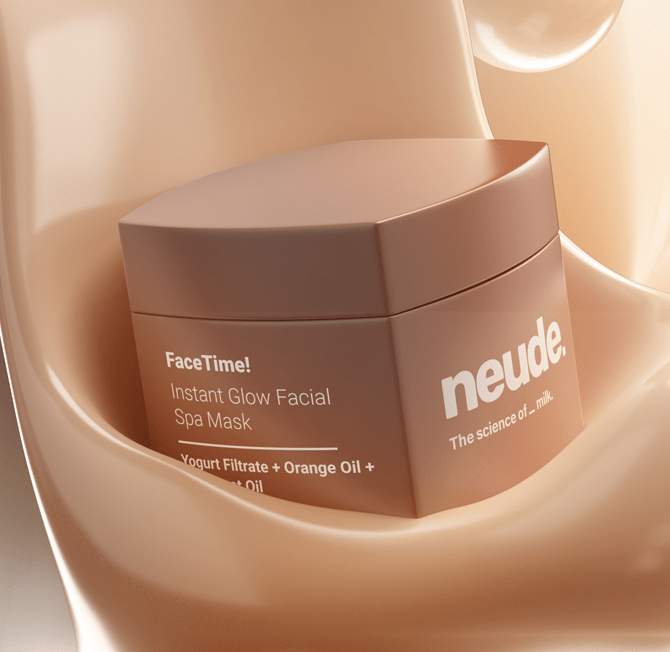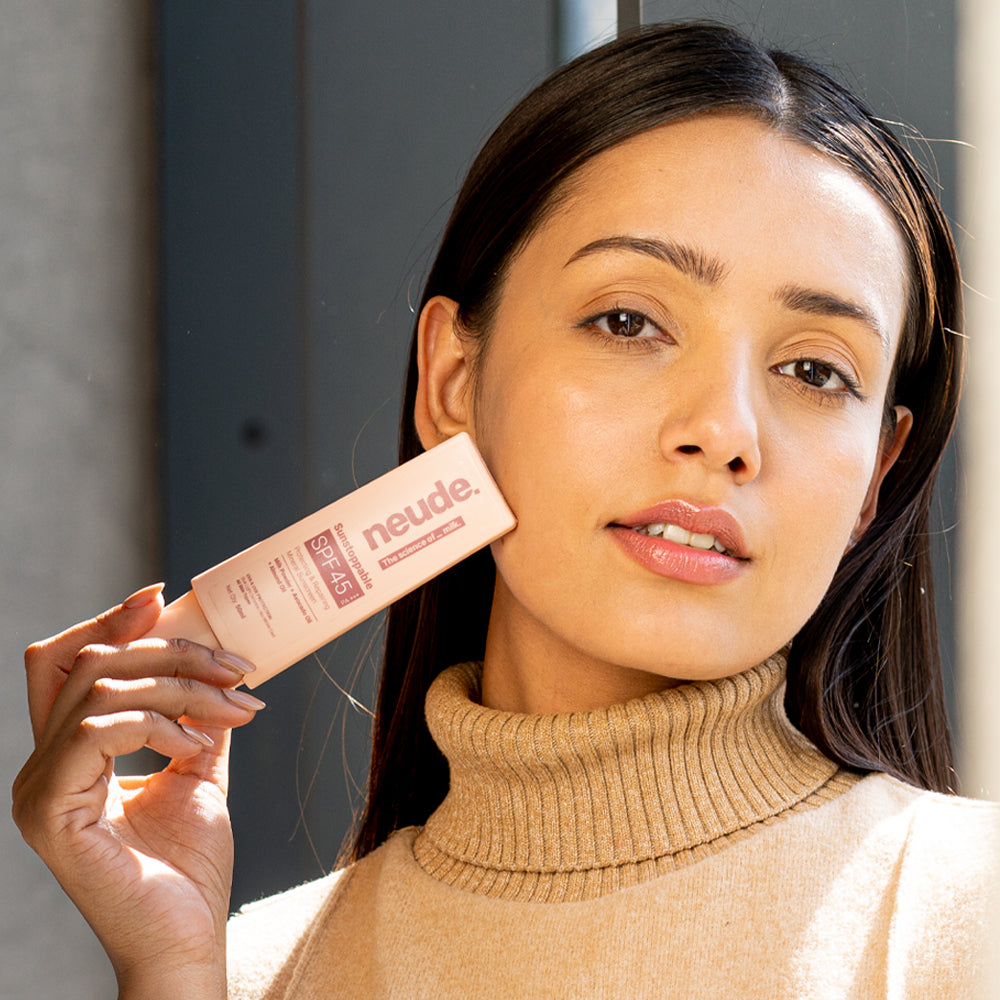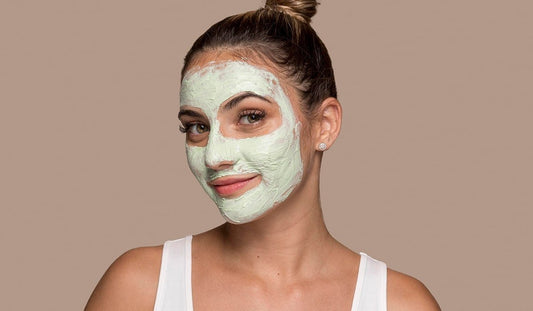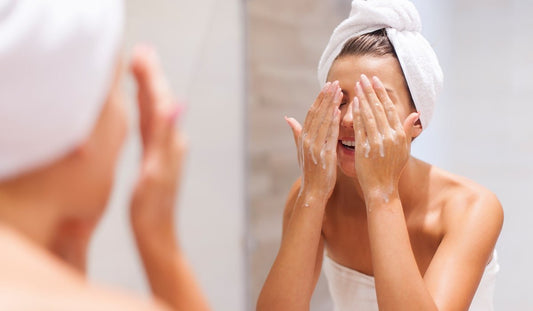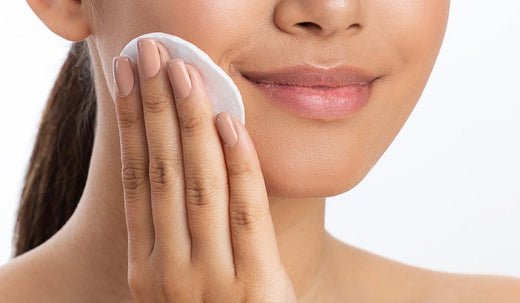The Alpha & Beta for Skin: What in the world are AHA & BHA?
Heard about skincare acids? I know it sounds kinda weird, but they're seriously gonna amp up your routine! Forget those crazy scientific names, most are just natural stuff. But, what's the deal with them? Why should you even care? We'll break it down for you.
And if you're all about that flawless, no-bumps, no-pores vibe, you need chemical exfoliants. AHAs and BHAs are where it's at, the real heroes of any exfoliation regime. If you haven't dived into them yet, now's the time to get in the know.
AHA and BHA gently buff away dead cells and deep clean your pores, leaving you with that lit-from-within glow. Don't get it wrong, though—AHAs and BHAs are two completely different groups of exfoliants. Salicylic acid? That's a BHA. Glycolic acid? AHA. Hyaluronic acid? Nope, not in this club. Lactic acid? Yep, that's an AHA too.
It can be a bit confusing, we know! That's why we got this guide to spill all the beans on AHA and BHA, so you can slay your skin goals. Think of us as your go-to skincare squad, spilling all the deets on why you need 'em. Let's get glowing!
First things first, what are all these acronyms?
The acid world breaks down into three main categories:
- Alpha Hydroxy Acids (AHAs)
- Beta Hydroxy Acids (BHAs)
- Polyhydroxy Acids (PHAs)
Basically, any skincare acid you're using falls into one of these categories.
Alright, let's understand what’s AHAs:
AHAs, aka alpha-hydroxy acids, are natural exfoliating acids found in sugarcane (glycolic acid), milk (lactic acid), and fruits (citric acid).
They're water-soluble and mainly work on the skin's surface, making them perfect for tackling fine lines, uneven texture, and sun damage. AHAs work by loosening the bonds between dead skin cells, revealing a brighter, smoother complexion.
Popular AHAs include glycolic acid, great for preventing breakouts and minimizing pores, and lactic acid, known for hydrating the skin by boosting natural hyaluronic acid levels.
So, if you're aiming to zap fine lines, wrinkles, or sun damage, AHAs are your go-to. And if dry skin's your thing, AHAs are likely your best bet over BHAs, which target oil.
Check it out, here are the benefits of AHAs:
They target all areas of the skin: AHAs aren't picky—they work on both the surface (epidermis) and the deep layers (dermis) of your skin. They basically give dead skin cells the boot by breaking their bonds, so they can peace out and make way for fresh skin.
Collagen boosters: AHAs boost collagen production. This makes them perfect for smoothing out fine lines and wrinkles. Plus, they help keep your skin looking youthful and firm.
Sun damaged skin? AHAs are your go-to for fighting off sun damage and wrinkles. They're legit proven to reduce those pesky signs of too much sun exposure. Just remember, though, they're not a replacement for sunscreen—always SPF up!
Types of AHAs
Although there are a number of different types of AHAs, the most frequently used alpha-hydroxy acids in Neude products include lactic acid. They often pair it up with other AHAs for Hi-Powered, Skin-deep treatment, like in their SkinGenesis All-in-One Face Serum!
This serum's got a blend of lactic acids & niacinamide to amp up cellular turnover, leaving your skin smoother and more radiant. It's all about hydration, protection, and getting that glow on fleek. Plus, it's got aloe vera and green tea for that extra oomph.
Other types of AHAs include:
- Glycolic Acid: The OG exfoliator for smoother, brighter skin
- Lactic Acid: The hydration powerhouse that's gentle yet effective
- Tartaric Acid: The brightening boost for a radiant complexion
- Citric Acid: The spot-fading solution for even-toned skin
- Malic Acids: The rejuvenating ingredient for a youthful glow
- Mandelic Acid: The gentle giant that tackles acne and texture
With these AHAs in your arsenal, your skincare game is set to soar!
So, you know AHAs, right? Well, let's talk about BHAs!
BHAs are a type of skin-friendly acid called beta-hydroxy acids. They're like AHAs (another type of acid), but they work a bit differently. The main BHA you'll hear about is salicylic acid!
So, what do BHAs do? Well, they penetrate deep into pores because they are oil-soluble. This means they can help with things like clogged pores and blackheads. Plus, they can also make your skin look and feel less red and sensitive.
And if you have oily skin, BHAs help to balance out the oiliness, so your skin feels more comfortable. In a nutshell, using BHA regularly can lead to fewer clogged pores, fewer blackheads, calmer skin, and a less oily complexion. Sounds pretty good, right?
Check it out, here are the benefits of BHAs:
Exfoliates for smoother skin: BHAs get rid of dead skin cells and excess oils, leaving your skin feeling smoother and looking more even.
Refines pores: BHAs go deep into your pores, clearing away oil, dirt, and dead skin cells that can cause blackheads and acne. This helps your skin look clearer and healthier.
Fights acne: Salicylic acid, the main BHA, works great for acne-prone skin. It gets deep into your pores to prevent oil buildup and has anti-inflammatory properties to calm redness and irritation.
Brightens complexion: BHAs can also help with dark spots, uneven skin tone, and hyperpigmentation, giving your skin a brighter, more radiant appearance
Types of BHAs
When we talk about beta-hydroxy acids (BHAs) in skincare, we refer to salicylic acid. It's everywhere in skincare, and for good reason! It's great at clearing out your pores, which means fewer breakouts and smoother skin overall.
If you're ready to embrace the benefits of BHAs, consider incorporating protein-powered Neude Skin’s Tone It Up Face Toner supercharged with salicylic acid. It is a must-have if you are looking for a toner for oily acne-prone skin. It combats excess oil, manages acne and tackles blackheads & whiteheads.
Are AHA and BHA good for skin?
AHA and BHA are great for your skin because they gently remove dead cells without any harsh scrubbing, leaving your skin feeling fresh and renewed.
Exfoliating with AHA and BHA helps your skin stay healthy and balanced, protecting it from things like pollution and sun damage.
But, it's important to understand the difference between AHA and BHA exfoliants & use them right! Look for products that are gentle and have a pH level between 3 and 4. That way, you'll get all the perks without any irritation.
AHA vs. BHA: How to choose?
When picking between AHA and BHA products, it's all about what your skin needs. If you're dealing with cystic acne or other types of breakouts, BHA is your go-to, especially when paired with other acne-fighting ingredients like peptides, and lactic acid. It goes deeper, tackling those stubborn spots without irritating your skin.
On the flip side, if dry & dull skin is your main issue, alpha hydroxy acid (AHA) is the way to glow. It's all about targeting the top layer, especially for things like evening-out pigmentation. For lasting even-toned glow try Neude’s FaceTime! It’s an instant face mask curated specially for skin brightening and acne reduction.
Now, here's the deal: it's not always a one-or-the-other situation. Lots of products mix both AHAs and BHAs. It's all about understanding the difference between AHA and BHA and finding the right combo for your skin goals.
Mixing AHA and BHA: Can you use them together?
So, you're curious – can you mix AHA and BHA? Well, let's break it down. Research says combining them is a win for your skin game. They are tag-team to give you that fresh, glowy look by boosting collagen and stepping up sun protection.
But, hold up! Layering them directly on top of each other might not be the move. Since they're both exfoliating acids, it's best to switch them up to avoid irritating your skin or drying it out.
You could rock one in the morning and the other at night, or switch 'em up every other day. That's the move for pretty much all skin types.
And, if you're dealing with combination skin, you could hit up AHA for the dry zones and BHA for the oily ones. Easy, right?
How to use AHAs and BHAs?
First off, you've got options. You can either switch between AHAs and BHAs (like using AHA today and BHA tomorrow) or go for a product that's got both in a gentle blend.
But using both AHAs and BHAs twice a day? Probably not! Your skin's good, but it doesn't need that much exfoliation.
After cleansing and toning, swipe on your AHA/BHA exfoliant. No need to wait around – you can jump right into the rest of your routine. It won't mess with the pH of the exfoliant, so you're good to go.
Never skip SPF after using acids!
Whenever you're dealing with acids, always remember to slather on some SPF. Especially in the morning post exfoliation, your skin's super sensitive to UVA rays. So, exfoliate, SPF up, and repeat! Don't skip the SPF part, or you might end up with some pigmentation drama.
Let's be honest, a lot of us skip sunscreen because we're lazy or worry it'll make our skin too oily. But it's important to protect our skin, especially if we're using acids. Finding the right sunscreen can really make a big difference.
There are sunscreens now that provide just the right hydration for oily skin, with the help of lightweight oils and ingredients balanced just right to give you that sun glow while protected against UVA+UVB rays.
Newer ultra-nourishing formulations like Neude Skin’s Sunstoppable SPF45 PA+++ Sunscreen have lighter formulas that soak right in and don't leave that annoying white film behind. This 3-in-1 face sunscreen is an excellent choice for intensive sun exposure that protects, repairs and hydrates. Yup, it's true – you can finally find the best sunscreen for oily skin.
Tips to incorporate AHA & BHA into your skincare routine
Start slow: If you're new to AHA and BHA, take it easy. Begin with a gentle product once a week, then gradually increase how often you use it. Rushing can lead to irritation and dryness, so patience is key.
Pick the right product: There are tons of options out there, like a face moisturizer, face toner, face serum, and face mask. Choose one that matches your skin type. Got oily or acne-prone skin? BHA like the Tone It Up might be your best buddy because it dives deep into those pores.
Timing is key: AHA and BHA work best at night, so save them for your bedtime routine. After cleansing and toning, slather them on before moisturizing.
Don't mix and match: These exfoliants don't play well with others. Skip the scrubs and physical exfoliants when you're using AHA or BHA to avoid irritating your skin.
Sunscreen is your BFF: AHA and BHA can make your skin more sensitive to the sun, so don't forget your SPF during the day. It's like giving your skin a little umbrella to stay safe from UV rays.
Listen to your skin: Everyone's skin is different, so pay attention to how yours reacts. If it's not loving the AHA or BHA, dial it back or give it a break.
Our take on AHA vs BHA
To wrap it up, AHAs and BHAs offer a wealth of benefits for your skin, ranging from exfoliation and brightening to anti-ageing and acne treatment. But remember, start slow, find what works for your skin, and watch out for any side effects. With these powerful ingredients in your arsenal, you're on your way to achieving your skincare goals and rocking that Hi Glaze skin!



